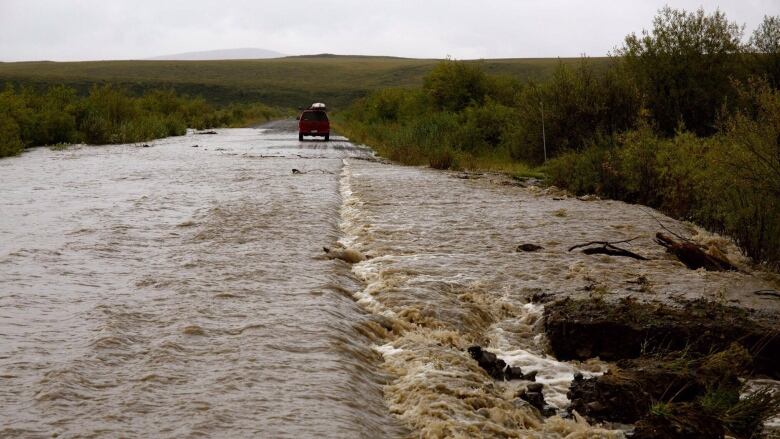Inuvik infrastructure may not be ready for climate change, says study
Research from Global Water Futures says spring flood will double by 2099 if nothing changes

The Arctic is expected to get warmer and wetter by the end of this century and new research says that could mean trouble for infrastructure in Inuvik.
The study from Global Water Futures looked at how climate change could impact Havipak Creek which crosses the Dempster Highway in Inuvik, N.W.T. and it predicts some major water changes.
"They were quite distressing," John Pomeroy, director of Global Water Futures and the study's lead author, said of the findings.
Researchers used aclimate model and a hydrological model topredict future weather and climate patterns in the region. They also looked at data gathered from 1960 to the present.
If greenhouse gas emissions continue at their current rate which Pomeroy said they are on track to do the study projects the region will be 6.1 C warmer by 2099 and precipitation, particularly rain, will increase by almost 40 per cent.
The study also found that the spring flood will be earlier and twice as large, and the permafrost will thaw an additional 25 centimetres. While the soil is expected to be wetter early in the summer, the study said it will be drier in late summer, meaning a higher risk of wildfires.

"The model's painting kind of a different world than we're living in right now for the Mackenzie Delta region," Pomeroy said.
He noted these changes are not only expected forHavipak Creek, but also for"many, many creeks along the northern part of the Dempster [Highway]."
Pomeroy said the deeper permafrost thawand a bigger spring flood could pose challenges for buildings, roads, culverts and crossings in the area that were designed with the20th century climate in mind.
- FROM 2013 | Dempster Highway closed near Eagle Plains due to washout
- FROM 2016 |DempsterHighway could be closed 'several days,' Yukongov'tsays
He said the projected growth of the snowpack and the spring flood are "of grave concern because that's what washes out the Dempster [Highway] and damages infrastructure in the area."
Culverts and bridges may have to be adjusted to allow room for greater stream flows, Pomeroy said. And building foundations that are dependent upon the ground staying frozen will have to be reinforced or redesigned.
Pomeroy said the ultimate solution is for humans to reduce greenhouse gas emissions.
"This study is the future we're heading for, but it's not the future we necessarily have if we can find a way to reduce those gases," he said.
"It'd be far smarter to get those emissions under control than to pay the terrible expenses for infrastructure and endangered safety of humans and destroyed ecosystems."
With files from Loren McGinnis












_(720p).jpg)


 OFFICIAL HD MUSIC VIDEO.jpg)
.jpg)



























































































